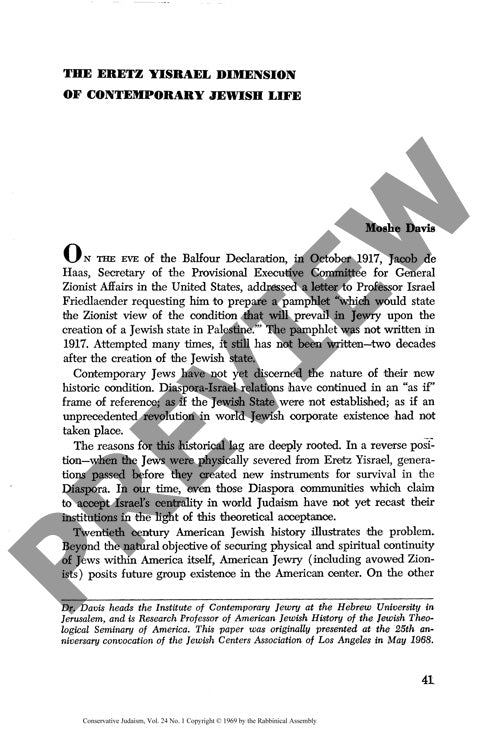The Eretz Yisrael Dimension of Contempor
Couldn't load pickup availability
The establishment of Israel in 1948 fundamentally transformed global Jewish identity, yet two decades later, both Israeli and Diaspora communities struggle to fully grasp their new historical reality. By 1967, Israel had emerged as the world's second-largest Jewish center, housing 17.5% of world Jewry and standing alone in its capacity to raise a comprehensively Jewishly-educated generation. Through analysis of demographic data, educational statistics, and cultural trends across Jewish communities worldwide, stark contrasts emerge between Israeli and Diaspora Jewish life. While Israeli youth maintain strong connections to worldwide Jewish destiny, Diaspora communities show concerning declines in Jewish educational attainment and cultural authenticity, with merely 90,000 students pursuing post-elementary Jewish education globally outside Israel. These communities increasingly exhibit "Jewishness" rather than substantive Judaism - a superficial identification without authentic identity. Analysis of population data, educational enrollment figures, and identity formation patterns reveals that the future vitality of both Israeli and Diaspora Jewish life hinges upon establishing an integrated "Eretz Yisrael dimension" within Diaspora community structures. This necessitates renewed emphasis on Hebrew education, religious-cultural renewal, and the concept of *mitzvat yishuv Eretz Yisrael* as a collective responsibility that transcends traditional aliyah frameworks.

More Information
-
Physical Description
-
Publication Information
Published 1969
ISBN
-
Publication Credits
Moshe Davis

